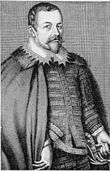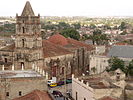Wikipedia:Today's featured list/June 2011
|
Featured list tools: |
June 6
Today's featured list is a brand new section of the main page, which will launch on 13 June 2011. The section will initially run once per week, although it is envisaged that it will eventually be able to sustain a daily slot. Wikipedia has over 2,000 Featured Lists, on a diverse range of topics, and it is hoped that showcasing them will inspire and motivate a wider group of editors to create new ones. The project's intention for launch is to keep things simple, and to be open to all. Any editor can propose a featured list for display on the main page, by drafting a short summary of a Featured List at the submissions page. Fellow members of the community will review the summary, and suggest or make improvements as necessary. From the accepted summaries, the Featured List directors – Dabomb87, Giants2008 and The Rambling Man – will schedule each week's list. The only thing preventing TFL from sustaining a daily slot at present is our lack of pre-prepared summaries. You can help by selecting a Featured List, and submitting a summary. (Full list...)
June 13
Common signs and symptoms of diving disorders can be observed either during a dive, on surfacing, or up to several hours after. Diving disorders are caused by breathing gas at the high pressures encountered at depth: when diving, the gas breathed must be at the same pressure as the ambient pressure, which can be much greater than on the surface, increasing by one standard atmosphere (100 kPa) for every 10 metres (33 ft) of depth. The principal conditions encountered are decompression illness (which covers decompression sickness and arterial gas embolism); nitrogen narcosis; high-pressure nervous syndrome; oxygen toxicity; and pulmonary barotrauma (burst lung). Although some of these may occur in other settings, they are of particular concern for divers. (Full list...)
June 20
Bodley's Librarian is the head of the Bodleian Library, the main library at the University of Oxford in England. Both are named after the founder, Sir Thomas Bodley (pictured). The university's library was established in about 1320 but had declined by the end of the 16th century, so in 1598 Bodley offered to restore it. The first librarian, Thomas James, was selected in 1599, and the Bodleian opened in 1602. Bodley wanted the librarian to be diligent, a linguist, unmarried, and not a parish priest, although James persuaded him to dispense with the last two requirements. In all, 24 people have served as Bodley's Librarian, some less well than others, with John Price (who held the post from 1768 to 1813) accused of "a regular and constant neglect of his duty". The current librarian, Sarah Thomas, was appointed in 2007; she is the first woman, and the first foreign librarian, to run the Bodleian. She said that when she saw the job description, "it was love at first sight". (Full list...)
June 27
Nine locations from the Caribbean island-nation of Cuba have been designated as World Heritage Sites by the United Nations Educational, Scientific and Cultural Organization (UNESCO). They are considered places of importance to cultural or natural heritage as described in the UNESCO World Heritage Convention, established in 1972. Cuba accepted the convention on March 24, 1981. Of the nine sites, two have been selected for their natural significance: Alejandro de Humboldt National Park in the eastern provinces of Holguín and Guantánamo, and Desembarco del Granma National Park, named for the yacht that carried the members of the 26th of July Movement, who started the Cuban Revolution. City landscapes include Old Havana, Trinidad, and Camagüey (pictured), all founded by early Spanish colonists in the 16th century. The sites include two historical agricultural regions: the coffee plantations of southeastern Cuba and the tobacco region of Viñales Valley. (Full list...)




